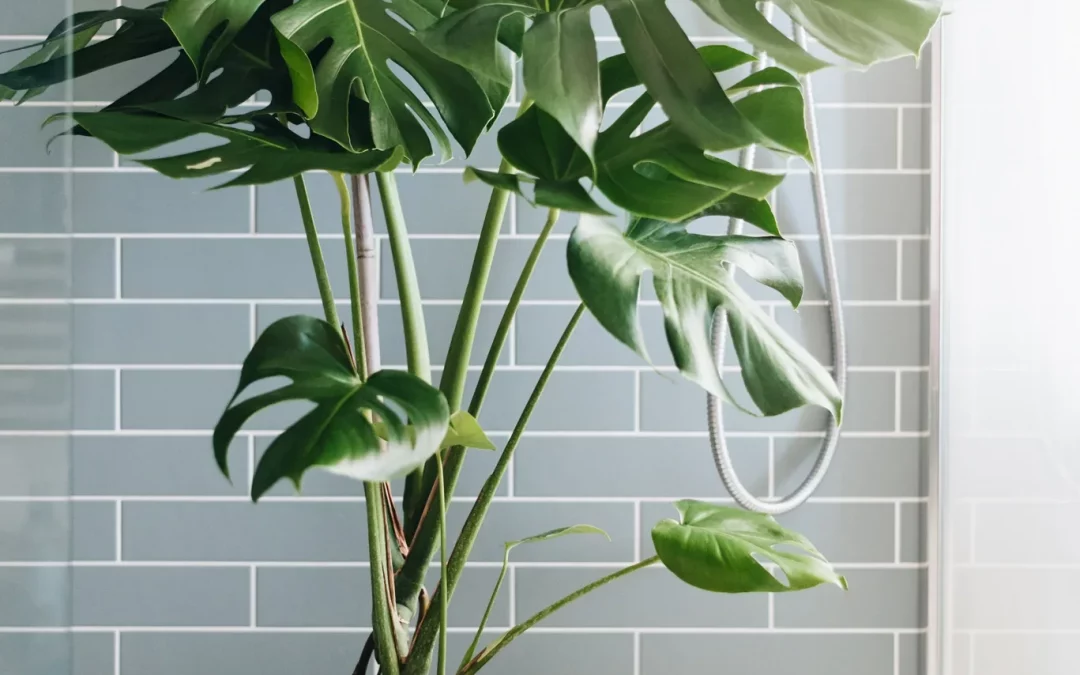Swiss Cheese Plant, scientifically known as Monstera deliciosa, has become a popular choice for indoor plant enthusiasts due to its unique, perforated leaves and easy-care nature. This tropical plant, native to the rainforests of Central and South America, brings a touch of the exotic to any indoor space. In this comprehensive guide, we’ll cover everything you need to know to care for, grow, and style your Swiss Cheese Plant, ensuring it thrives in your home or office.
Contents
Understanding Your Swiss Cheese Plant
Monstera deliciosa is known for its large, glossy, heart-shaped leaves with distinctive holes or fenestrations, which resemble Swiss cheese, hence the name. These holes are thought to allow rain and sunlight to pass through to the lower leaves in its natural rainforest habitat. As it matures, the plant can develop split leaves, adding to its beauty.
Optimal Growing Conditions
To mimic the plant’s natural environment and promote healthy growth, consider the following conditions:
Light: Swiss Cheese Plants prefer bright, indirect sunlight. Direct sunlight can scorch the leaves, while too little light can slow growth and lead to fewer holes in the leaves. A spot near a window with a sheer curtain is ideal.
Water: Water your Monstera when the top inch of soil feels dry to the touch. Over-watering can lead to root rot, so ensure the pot has good drainage.
Humidity: Being a tropical plant, it thrives in high humidity. Regular misting, a pebble tray, or a humidifier can help increase humidity levels.
Temperature: Aim for a temperature range between 65°F and 85°F (18°C to 29°C). Avoid placing your plant near drafts or heating and cooling vents.
Plant Care Tips
Soil: Use a peat-based potting mix with good drainage. Mixing in perlite or orchid bark can enhance drainage and aeration.
Fertilization: Feed your Monstera with a balanced, water-soluble fertilizer every month during the growing season (spring and summer). Reduce feeding in fall and winter.
Pruning: Pruning can help manage its size and encourage more bushy growth. Use clean, sharp scissors to trim any dead or yellowing leaves at the base of the stem.
Repotting: Repot your Swiss Cheese Plant every 2-3 years or when it becomes root-bound. Choose a pot that is 2 inches larger in diameter than the current one.
Propagation Techniques
Monstera deliciosa can be easily propagated through stem cuttings. Here’s a simple guide:
- Choose a healthy stem with at least one leaf and one node (the bump on the stem where leaves emerge).
- Cut just below a node using a clean, sharp knife.
- Place the cutting in water or moist potting soil, ensuring the node is submerged.
- Wait for roots to develop, which usually takes about 2-4 weeks.
- Once the roots are a few inches long, pot the cutting in soil.
Styling with Swiss Cheese Plants
The Swiss Cheese Plant’s dramatic foliage makes it a perfect statement piece for any room. Here are some styling tips:
Height and Structure: Use a tall planter to give your Monstera room to grow. As it matures, consider adding a moss pole or trellis to support its climbing habit.
Grouping: Pair your Monstera with other tropical plants like Philodendrons or Ferns to create a mini indoor jungle.
Minimalist Approach: A single Monstera in a sleek, modern pot can serve as a stunning focal point in a minimalist decor setting.
Conclusion
The Swiss Cheese Plant is a versatile and relatively easy-to-care-for option for adding greenery to your indoor space. With proper care, it can grow into a beautiful, large plant that brings a touch of the tropics to your home. Remember, patience is key with this plant, as its most stunning features—its large, perforated leaves—develop as it matures.


